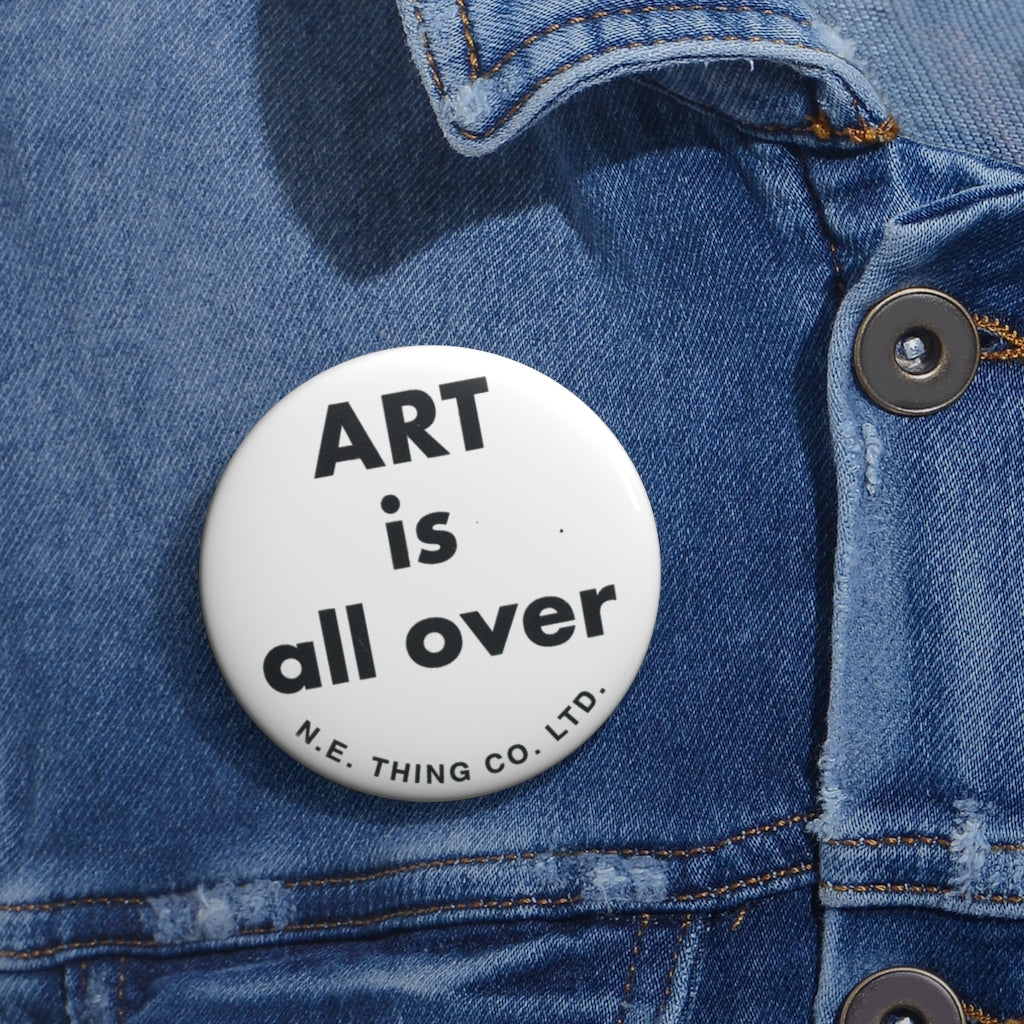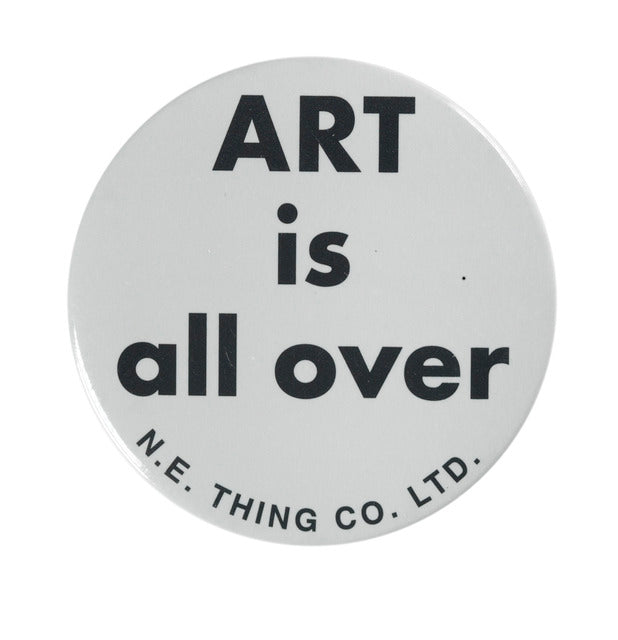Printify
N.E. Thing Co. ART is all over button
Couldn't load pickup availability
Founded in Vancouver by Iain and Ingrid (then Elaine) Baxter in 1966 and active until 1978, the N.E. Thing Co. Ltd. (aka NETCO) pioneered a radically unique approach to art-as-information that set an influential example for subsequent art practices in Canada. NETCO’s brand of conceptualism differed from American and British variants in terms of its influences and sensibility, which blended Pop art and Happenings with Marshall McLuhan’s media theory. Iain Baxter was first exposed to McLuhan’s ideas upon joining the Fine Arts faculty at the University of British Columbia in 1964, where McLuhan spoke at the UBC Festival of the Contemporary Arts the same year. In 1965, Baxter co-created the main festival attraction: a Happenings-inspired multimedia environment called The Medium is the Message. No artistic project ever assimilated McLuhan so thoroughly or took him so seriously as N.E. Thing Co. – though, with their playful and even goofy disposition, so distinct from the deadpan cool of most New York-based conceptual art, “serious” is hardly the word to describe NETCO.
There were several visionary and groundbreaking aspects to NETCO’s activities: first, their redefinition of art as “Visual-Sensory Information,” or VSI, and of artists as “visual informers,” terminology that flattened hierarchies and abolished distinctions between mediums and disciplines by translating all cultural forms into an “information flow,” while, at the same time, redefining information as sensory rather than cognitive; second, their corporate identity (they officially incorporated in 1969), which allowed them to sidestep conventional authorship and engage in diverse activities while envisioning a new social role and economic base for art production; third, their use of then-novel Telex and telecopier technology to distribute their corporate activities, breaking down distinctions between center and periphery through communications; fourth, their re-imagining of institutional functions, represented by Iain Baxter’s role in founding the Center for Communication and the Arts at Simon Fraser University (itself founded in 1965) and NETCO’s Environment exhibition at the National Gallery of Canada in 1969, an “occupation” of the museum that parallels but decidedly differs from other artists’ concurrent investigations (and critiques) of art institutions; and, finally, NETCO’s role in founding the Intermedia Society in Vancouver, a germinal “think tank” and collaborative artist-run space that planted the seeds of numerous later artist-run centres and parallel galleries in Canada.
Baxter elaborated on the topic of McLuhan’s sensorial characterization of information in a 1967 interview, in which, contrary to typical characterizations of information as utilitarian or technical, he describes in terms of innocence and empathy, an unfiltered flow of sensory input:
The world is made up of pieces of information of all kinds, visual or sensory. A fork, a car, a door, a handle, or a rock – all these things are information; and if you can get beyond the label-attitude you are able to see and experience all they contain…People don’t go off into these various realms of magie [sic] and empathy, pure form and surrealism, because labelling has become what their appreciation of life is. They have lost their innocent way of looking and feeling… [1]
This orientation towards the re-enchantment of the everyday was echoed by NETCO’s slogan, “Art is All Over” — meaning that "conventional" art was obsolete because "visual-sensory information" can be found everywhere — which they introduced in 1968 (and distributed on buttons). Their methodology of approaching the world as susceptible to “sensitive handling” led to their series of ACTs (Aesthetically Claimed Things) and ARTs (Aesthetically Rejected Things), also begun in 1968, each of which were certified by an official document complete with a seal of approval (or rejection) and a photograph of the thing in question – an aspect of NETCO’s meticulously-formatted "business" cataloguing of its own activities which, like many conceptual projects, blurred the distinction between documentation and artworks, while reflecting somewhat ironically on Baxter’s stated resistance towards “labelling.”
In 2005, Iain Baxter officially changed his surname to “Baxterand” (commonly written as Baxter& or BAXTER&), as a reflection of “his belief that life is a continual set of connections and interconnections,” and as a way to “treat his name as a brand, complete with a distinct visual identity.”
This pin reproduces the original N.E. Thing Co. "Art is All Over" slogan on a 2.25" button. Iain Baxter was contacted for permission but has neither aesthetically claimed nor aesthetically rejected this product.
[1] Ian Baxter, taped interview, February 6, 1967, quoted in David Tomas, “The Dilemma of Categories and the Overdetermination of a Business Practice: N.E. Thing Co. at the National Gallery of Canada, Ottawa, June 4—July 6, 1969,” in Documentary Protocols (1967-1975), ed. Vincent Bonin (Montreal: Leonard & Bina Ellen Gallery, Concordia University, 2010), 222.
.: Safety pin backing
.: Made in the USA







